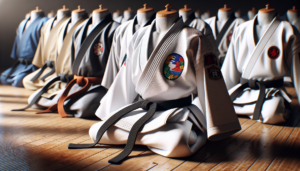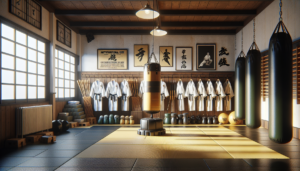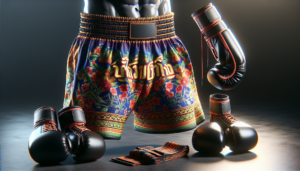Introduction to Wing Chun
Wing Chun is a traditional Chinese martial art that has captured the interest of practitioners worldwide. Known for its efficient and direct techniques, Wing Chun focuses on close-range combat and practical self-defense applications. This comprehensive guide will explore the rich history, fundamental principles, and training methods of Wing Chun, providing insights into this fascinating martial art.
The Origins and History of Wing Chun
The origins of Wing Chun can be traced back to southern China, where it was developed as a means of self-defense against oppressive forces. According to legend, the art was created by a woman named Ng Mui, who distilled her knowledge of various martial arts into a streamlined system that could be learned quickly and effectively.
Over time, Wing Chun evolved and spread throughout China, with different lineages and branches emerging. The art gained international recognition in the 20th century, largely due to the influence of renowned master Ip Man and his famous student, Bruce Lee. Today, Wing Chun is practiced by enthusiasts in many countries, attracted to its practicality and depth.
Philosophy and Principles of Wing Chun
At its core, Wing Chun is based on a set of guiding principles that shape its techniques and training methods. One of the key principles is economy of motion, which emphasizes using the shortest and most direct path to neutralize an opponent’s attack. Wing Chun practitioners seek to maintain a strong structure and balance, allowing them to generate power from a stable base.
Another important aspect of Wing Chun philosophy is the concept of relaxation and sensitivity. By staying relaxed and attuned to an opponent’s movements, practitioners can respond swiftly and effectively. This sensitivity is developed through drills like Chi Sau (sticky hands), which trains the ability to feel and interpret energy.
Fundamental Techniques of Wing Chun
Wing Chun’s effectiveness lies in its simplicity and practicality. The art consists of a concise set of techniques designed to be applicable in real-world situations. These techniques are built upon a foundation of proper stances, footwork, and body mechanics.
Basic Stances and Footwork
The primary stance in Wing Chun is the Yee Jee Kim Yeung Ma, also known as the pigeon-toed stance or goat stance. This stance provides a stable base for generating power while allowing for quick and agile movements. Footwork in Wing Chun emphasizes economy and efficiency, with practitioners learning to step in triangular patterns to maintain balance and control distance.
Striking Techniques
Wing Chun is known for its fast and powerful striking techniques. The primary strikes include:
- Straight punch: A direct, centerline punch that is the cornerstone of Wing Chun’s offensive arsenal.
- Palm strike: A strike using the heel of the palm, often targeting the chin or nose.
- Elbow strike: A close-range strike utilizing the elbow, effective in tight spaces.
These strikes are delivered with relaxed, whip-like power, taking advantage of the body’s natural structure and alignment.
Defensive Techniques
Wing Chun’s defensive techniques are designed to neutralize attacks while simultaneously creating openings for counterattacks. Some key defensive techniques include:
| Technique | Description |
|---|---|
| Pak Sau | Slapping hand used to deflect incoming strikes |
| Bong Sau | Wing arm used to redirect and control an opponent’s limbs |
| Tan Sau | Palm-up hand used to disperse energy and protect the centerline |
By combining these defensive techniques with footwork and angling, Wing Chun practitioners aim to dissolve an attacker’s force and create opportunities to strike.
Training Methods in Wing Chun
Wing Chun employs a systematic approach to training, progressively developing a practitioner’s skills through solo drills, partner exercises, and free-flowing applications. Each training method plays a crucial role in internalizing the art’s principles and techniques.
Solo Drills and Forms
Solo training in Wing Chun revolves around the practice of forms, or pre-arranged sequences of movements. The three primary forms are:
- Siu Nim Tau: The first form, which focuses on developing structure, stance, and basic hand techniques.
- Chum Kiu: The second form, which introduces turning, stepping, and bridging the gap with an opponent.
- Biu Ji: The third form, which includes emergency techniques and more advanced footwork.
These forms serve as a foundation for understanding Wing Chun’s principles and provide a platform for refining techniques.
Partner Drills and Sparring
Partner drills are essential for developing timing, sensitivity, and the ability to apply techniques in a dynamic context. Drills like Lap Sau (rolling hands) and Dan Chi Sau (single sticking hand) allow practitioners to practice attacks, defenses, and counterattacks in a controlled manner.
As students progress, they engage in more free-flowing sparring exercises, testing their skills against resisting opponents. Sparring in Wing Chun emphasizes relaxation, efficiency, and the ability to adapt to changing circumstances.
Chi Sau (Sticky Hands) Training
Chi Sau, or sticky hands, is a unique training method that sets Wing Chun apart from many other martial arts. In Chi Sau, partners engage in a tactile feedback drill, maintaining constant contact with each other’s arms while executing techniques. This training develops sensitivity, reflexes, and the ability to interpret and respond to an opponent’s energy.
Through diligent practice of Chi Sau, Wing Chun practitioners cultivate a heightened sense of awareness and the ability to instinctively react to an opponent’s movements. This skill is invaluable in real-world self-defense situations, where split-second decisions can make the difference between success and failure.
Advanced Techniques and Weaponry
As practitioners delve deeper into Wing Chun, they encounter more advanced techniques and weapons training. These elements build upon the foundational skills and principles, expanding a practitioner’s repertoire and understanding of the art.
Siu Lim Tau: The First Form
The Siu Lim Tau form serves as the bedrock of Wing Chun training. This solo form focuses on developing proper structure, stance, and hand techniques. Through repeated practice of Siu Lim Tau, practitioners internalize the fundamental movements and principles that underlie the entire Wing Chun system.
The form emphasizes maintaining a relaxed and upright posture, allowing for efficient transfer of energy from the ground up. Siu Lim Tau also trains the basic hand techniques, such as the straight punch, palm strike, and Tan Sau, instilling proper alignment and mechanics.
Baat Jaam Dao: Butterfly Swords
In addition to its empty-hand techniques, Wing Chun includes training with traditional Chinese weapons. One of the most prominent weapons in the Wing Chun arsenal is the Baat Jaam Dao, or butterfly swords. These short, double-edged swords are used in pairs, emphasizing close-range slashing and trapping techniques.
The Baat Jaam Dao form builds upon the principles of the empty-hand forms, adapting them to the use of weapons. Practitioners learn to flow seamlessly between empty-hand and weapons techniques, using the butterfly swords to extend their reach and enhance their offensive and defensive capabilities.
Notable Wing Chun Masters
Throughout its history, Wing Chun has been shaped by the contributions of outstanding masters who have dedicated their lives to preserving and advancing the art. These individuals have played a crucial role in spreading Wing Chun across the globe and ensuring its continued relevance in the modern era.
Sifu Francis Fong
Sifu Francis Fong is a renowned Wing Chun master based in the United States. With decades of experience, he has gained a reputation as a highly skilled teacher and practitioner. Sifu Fong emphasizes the importance of mastering the fundamentals and developing a strong foundation in Wing Chun’s principles and techniques.
Through his teachings, Sifu Fong has inspired countless students to deepen their understanding and appreciation of Wing Chun. His insights into the art’s history, philosophy, and practical applications have made him a sought-after instructor in the martial arts community.
Master Samuel KWOK
Master Samuel KWOK is another prominent figure in the world of Wing Chun. Based in the United Kingdom, he has been instrumental in promoting the art across Europe and beyond. Master KWOK is known for his dynamic teaching style and his ability to make Wing Chun accessible to students of all levels.
In addition to his regular classes, Master KWOK conducts seminars and workshops around the world, sharing his knowledge and passion for Wing Chun with practitioners from diverse backgrounds. His commitment to preserving the art’s traditions while adapting it to modern contexts has earned him a loyal following and respect within the Wing Chun community.
Wing Chun in Modern Times
In recent years, Wing Chun has continued to evolve and find new applications in the modern world. From its traditional roots as a self-defense system to its incorporation into contemporary martial arts practices, Wing Chun remains a vital and relevant art.
Wing Chun for Self-Defense
At its core, Wing Chun is a practical martial art designed for real-world self-defense situations. Its emphasis on efficiency, simplicity, and practicality makes it well-suited for individuals seeking to protect themselves and their loved ones.
Wing Chun’s close-range techniques and focus on controlling an opponent’s centerline make it particularly effective in scenarios where space is limited, such as in crowded urban environments. By training in Wing Chun, practitioners develop the skills and mindset necessary to handle physical confrontations with confidence and control.
Wing Chun in Mixed Martial Arts (MMA)
In the world of competitive fighting, Wing Chun has found a place in the rapidly growing field of mixed martial arts (MMA). While Wing Chun was not originally designed for sport combat, many of its principles and techniques have been adapted and incorporated into MMA training.
MMA fighters who have studied Wing Chun often utilize its close-range striking, trapping, and control techniques to complement their grappling and ground fighting skills. The art’s emphasis on efficiency and economy of motion can be valuable assets in the fast-paced, high-pressure environment of MMA competition.
Online Resources and Communities
The rise of the internet has transformed the way Wing Chun is learned and shared. Online resources, such as instructional videos, forums, and social media groups, have made it easier than ever for practitioners to connect with one another and access high-quality training materials.
Many prominent Wing Chun masters, including Sifu Francis Fong and Master Samuel KWOK, have embraced online platforms to share their knowledge and reach a wider audience. Through online classes, webinars, and video lessons, students can learn from expert teachers regardless of their geographic location.
Online communities have also played a vital role in fostering a sense of camaraderie and support among Wing Chun practitioners worldwide. Discussion forums and social media groups provide spaces for practitioners to exchange ideas, share experiences, and offer guidance to one another on their martial arts journeys.






